Category: End of life
Posted by Dr. El - July 2, 2015 - Communication, End of life, Engaging with families, Resident care
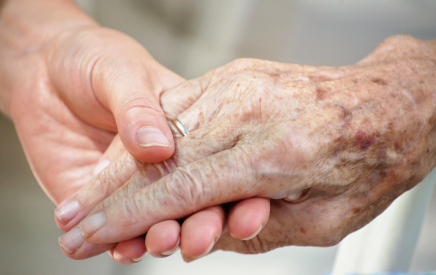
Here’s an important article in the New York Times Opinionator Column by Ellen Goodman, one of the founders of The Conversation Project (which I’m about to investigate further). Note her comment that she expected her mother’s doctors to tell her what to do. The families of our residents are expecting the same from us.
I was 25 when I flew home for my father’s last birthday. His cancer had returned and he would die three months later at the age of 57. What I remember most about that weekend was the large rectangular gift box he opened. My mother had bought him a new suitcase.
I don’t know if that suitcase qualifies my family for the Denial Hall of Fame. There are so many contenders for that honor. But I’ve carried the psychic baggage over the years. I have never forgotten that image and how we lost a chance to say goodbye. I still wonder if my father was lonely in the silence that surrounded our inability to talk about what we all knew.
Decades later my mother began a long slow decline. By then, I was a newspaper columnist, a job that I often described as “telling people what you think.” I was professionally outspoken. But little had changed since my father’s death.
Yes, my mother and I talked about everything — but we didn’t talk about how she wanted to live toward the end. The closest we ever came to discussing her wishes was when she would see someone in dire straits and say, “If I’m ever like that, pull the plug.” But most of the time there is no plug to pull.
Gradually and painfully, my mother lost what the doctors call “executive function,” as if she were a C.E.O. fumbling with Excel spreadsheets, not a 92-year-old who couldn’t turn on the television or make a phone call. Eventually, she couldn’t decide what she wanted for lunch, let alone for medical care.
In some recess of my mind, I still assumed that death came in the way we used to think of as “natural.” I thought that doctors were the ones who would tell us what needed to be done. I was strangely unprepared, blindsided by the cascading number of decisions that fell to me in her last years.
For the rest of the article, visit:
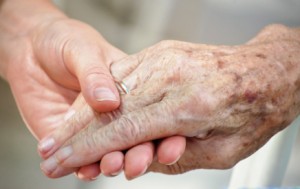
Posted by Dr. El - April 1, 2015 - Communication, End of life, McKnight's Long-Term Care News, Resident care, Transitions in care

Here’s my latest article on McKnight’s Long-Term Care News:

As a psychologist observing the effects of medical interventions on the mental health of the long-term care resident, I often ask, “Is this aggressive procedure helping?”
Such a well-intended question can prompt the team to reconsider the course of treatment or to affirm that care is in line with the wishes of the resident and their family.
Conversely, I do what I can to encourage my residents to comply with medical recommendations. When a resident presents with end-stage renal disease (ESRD) and the inevitable recommendation of hemodialysis is given, I work with them to adjust to this turn of events.
That’s why I was surprised to read in Paula Span’s “New Old Age” article in the New York Times last week, “Learning to Say No to Dialysis,” that dialysis isn’t always the best course of treatment for older patients.
Span reports that while dialysis can be very successful for younger and healthier patients, about 40% of patients with ESRD over the age of 75 die within a year and only 19% survive over four years. One study found that 58% of nursing home residents died within a year. Meanwhile, 61% of patients in a Canadian study said they regretted starting dialysis.
What leads to regrets tend to be the following factors, which can contribute to feelings of depression among those on a renal program:
• Physical symptoms such as pain, fatigue, nausea and headaches
• The amount of time spent on dialysis
• Inability to travel
• Dietary restrictions
Span quotes nephrologist Dr. Alvin H. Moss, who notes, “Patients are told, ‘You have to go on dialysis or you’ll die,’ rather than, ‘You could have up to two years without the treatment, without the discomfort, with greater independence.’” I’ve been part of teams that have told residents the exact words of that first message.
Medical management
For older patients, particularly those with other health problems, Dr. Moss asserts that medical management might be a way for them to focus on extending their quality of life and avoiding the discomforts of dialysis. The American Society of Nephrology suggests discussing this alternative to dialysis with patients through a shared decision-making process, as noted in their Choosing Wisely guidelines.
Facilitating treatment discussions
For the entire article, visit:

Posted by Dr. El - February 18, 2015 - Business Strategies, Communication, End of life, McKnight's Long-Term Care News, Talks/Radio shows

Here’s my latest article on McKnight’s Long-Term Care News:

Last week, I attended the MarcusEvans LTC and Senior Living CXO Summit in Los Angeles, where I delivered a keynote address on “Identifying and Repairing Communication Gaps in LTC.” It was a fascinating, energizing event, and not just because I was leaving the frigid temperatures of New York City to dine outdoors in Marina Del Rey.
Of course, I was all jazzed up to speak about my obsession, long-term care. Of the many communication gaps I mentioned that need repairing, the one that most people commented on afterward was the way we handle end-of-life care.
Perhaps the ample feedback reflected how we, as a country, are spending so much money on aggressive medical treatments that are unlikely to help those who are dying and that most people wouldn’t want if they knew what they entailed. Or perhaps it’s because the vast majority of the audience was not only professionals in the field but also had a relative in long-term care. They recognized the value of having a peaceful death both for the resident and for their family.
It was interesting to me that only a few of these C-suite attendees had heard of Atul Gawande, MD, whose recent book on end-of-life care, “Being Mortal: Medicine and What Matters in the End,” became the basis for a “Frontline” documentary that aired last week. Atul Gawande is all the rage in my circle.
I, on the other hand, was gobbling up new information about positioning care facilities to thrive over the long haul. The clinical and the financial sides of the business have a lot to teach each other.
One of the highlights for me was hearing Dr. Margaret Wylde of the ProMatura Group speak about what’s important to residents of senior living communities. I was so excited by her information that I leaped from my seat and shouted, “Yes! Yes! Right on, sister!” At least, that’s what I was doing on the inside, while my outside sat politely nodding in my gray business suit.
For the entire article, visit:

Posted by Dr. El - January 21, 2015 - Customer service, End of life, McKnight's Long-Term Care News, Personal Reflections, Resident care

Here’s my latest article on McKnight’s Long-Term Care News:

There are moments in life that engender important questions. When an individual is born, we ask, “Is it a boy or a girl?” When the person dies, we ask, “What happened?” In long-term care, we’re not around for the first question, but we often are for the second.
Though infrequently observed by those not involved with direct care, how someone dies is a very important part of the culture of the long-term care organization.
In “Remembering the Lost,” New Old Age blogger Paula Span reports on the typical experience of loss in LTC, where deaths are often barely acknowledged. She describes two alternative programs that offer a way to recognize individuals who have lived and died in LTC.
In “Better death notifications could improve CNA work experience, study suggests,” McKnight’s notes that how the deaths of residents are communicated to CNAs affects the way they feel about their work. The best way to find out, the study concludes, is to be told prior to beginning a work shift. The hardest way to learn of a death is to arrive at the resident’s room and find it emptied of belongings or filled with a new resident.
A front-line perspective
Like others performing direct care, I’ve had to cope with the loss of residents. I felt sucker-punched by the deaths that occurred early in my LTC career. My youth, inexperience, denial, and lack of training in issues around death made the demise of very ill or very old residents seem sudden and shocking.
I quickly got some training in thanatology (the study of death) and I’ve had many years of experience since then. I learned to protect my heart and love with a little cushion of distance around me.
Echoing the findings of the study referred to above, my worst experience by far was coming in to work to find the room empty of a beloved patient, the bed stripped and raised as high as possible after the mattress had been cleaned. By contrast, once an aide rushed to me the moment I got off the elevator to visit one of my patients, telling me she’d passed the night before. I thanked her profusely, hurried to the bathroom and cried.
My rituals around loss do still occasionally involve crying in the bathroom, but more often since I learned to protect my heart I look upward and say, “Rest in peace, John.” Or Mary. Or Viola. Sometimes I talk with other staff members who were close to the resident. Or I write about the person who died.
Creating better ways to address losses in LTC
My personal rituals were developed in the absence of formal, facility-sanctioned acknowledgement of the deaths of residents. As a shrink, I was aware of the need to get training and to recognize the personal impact of these losses.
I suspect that many new staff members don’t make it past the “sucker-punch” phase of losing residents. Instead, they quit, so that new staff members must be hired and trained. For ideas on how to reduce this likelihood, read Absenteeism and turnover in LTC? Death anxiety could be the cause.
Facilities can improve the experience of death and dying for the residents, staff and family by addressing various aspects of the process such as:
For the entire article, visit:
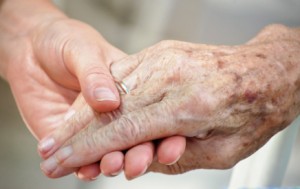
Posted by Dr. El - May 3, 2013 - Business Strategies, Common Nursing Home Problems and How Psychologists Can Solve Them, Communication, End of life, McKnight's Long-Term Care News, Motivating staff, Psychology Research Translated

Here’s my latest article at McKnight’s Long-Term Care News:
I started working in long-term care when I was in my early 30s and I was shocked at first when the residents died. I was used to falling in love with my patients — I consider it a prerequisite for psychotherapy. I wasn’t used to them dying on me.
In the years since, I’ve lost many, many people who have touched my heart, but I can still remember very clearly the ones who passed when I was new. In order to make it in LTC, I’ve protected myself by falling in love in a different way.
A recent New York Times article, “Is Giving The Secret of Getting Ahead?”, piqued my interest when it touched on the impact of death anxiety at work, suggesting that it could have an effect on absenteeism and turnover. Working with residents in LTC is all about coping with death, and facilities have huge problems with absenteeism and turnover —surely there was a connection. I raced through the article, located the research paper it mentioned, “The Hot and Cool of Death Awareness at Work,” and plowed through that too. What I read seemed very applicable to long-term care, so I’m going to present the gist of the research and ways to reduce absenteeism and turnover based on these ideas.
Mortality cues
In “The Hot and Cool of Death Awareness at Work,” authors Grant and Wade-Benzoni outline different types of work where mortality cues can be chronic or acute, internal or external to the job, and personal or vicarious. A firefighter, for example, is constantly in a work situation that threatens his life. This would be considered a chronic, internal, personal mortality cue. A nursing home employee would have a chronic, internal, vicarious mortality cue because they are repeatedly exposed to other people at work who are dealing with end-of-life issues.
Reactions to mortality cues
The authors state that there are two different reactions to being aware of death at work. A “hot” reaction leads to self-protection and “stress-related withdrawal behaviors” such as absenteeism, tardiness, and turnover. A “cool” reaction leads to prosocial behaviors such as helping, mentoring, and thinking of work in the context of contributing to society. They refer to the hot reaction as “death anxiety” and the cool reaction as “death reflection” and note that chronic exposure to mortality cues can shift a worker from death anxiety to death reflection.
This shift from death anxiety to death reflection describes my experience as I continued in long-term care. It also explains why some new workers bail out early and others persevere to become beacons of light in a challenging environment. In addition, the researchers propose that as we age, we become more likely to experience death reflection rather than anxiety. Younger workers, therefore, are more likely to withdraw from the nursing home environment.
Retaining new young workers
________________________________________________________________________________________
Coping with Grief, for Staff Members: Conversation with grief expert Courtney Armstrong, LPC
 Beloved residents decline and then die, their families stop visiting the nursing home — coming to terms with these losses is an unacknowledged challenge of our work. Especially helpful for training directors, new employees, or those struggling with a current loss either on or off the job, this 20-minute audio will help staff members:
Beloved residents decline and then die, their families stop visiting the nursing home — coming to terms with these losses is an unacknowledged challenge of our work. Especially helpful for training directors, new employees, or those struggling with a current loss either on or off the job, this 20-minute audio will help staff members:
- Understand their feelings
- Recognize symptoms of grief
- Identify coping skills
- Assist each other in creating a supportive community
Includes FREE:
- Signs of Grief checklist
- LovingKindness Meditation Sign suitable for posting at the nursing station
Instant Download: Only $7.99

Posted by Dr. El - April 2, 2012 - End of life, Resident care, Transitions in care
I read this worthwhile article by Susan Jacoby on the March 30, 2012 Opinion Page in the New York Times.
Susan Jacoby is the author of “Never Say Die: The Myth and Marketing of the New Old Age.”
I WAS standing by my 89-year-old mother’s hospital bed when she asked a doctor, “Is there anything you can do here to give me back the life I had last year, when I wasn’t in pain every minute?” The young medical resident, stunned by the directness of the question, blurted out, “Honestly, ma’am, no.”
And so Irma Broderick Jacoby went home and lived another year, during which she never again entered a hospital or subjected herself to an invasive, expensive medical procedure. The pain of multiple degenerative diseases was eased by prescription drugs, and she died last November after two weeks in a hospice, on terms determined by explicit legal instructions and discussions with her children — no respirators, no artificial feeding, no attempts to buy one more day for a body that would not let her turn over in bed or swallow without agony.
The hospice room and pain-relieving palliative care cost only about $400 a day, while the average hospital stay costs Medicare over $6,000 a day. Although Mom’s main concern was her comfort and dignity, she also took satisfaction in not running up Medicare payments for unwanted treatments and not leaving private medical bills for her children to pay. A third of the Medicare budget is now spent in the last year of life, and a third of that goes for care in the last month. Those figures would surely be lower if more Americans, while they were still healthy, took the initiative to spell out what treatments they do — and do not — want by writing living wills and appointing health care proxies.
For more: Taking Responsibility for Death
Posted by Dr. El - January 11, 2012 - Anecdotes, Communication, End of life, Resident care, Transitions in care
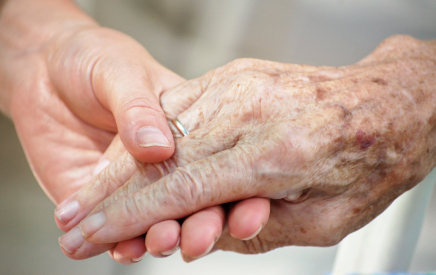
I hadn’t been on the North wing of the nursing home in a while, and when I saw Juanita Johnson sleeping in a geri-recliner, I turned to the nurse, aghast. “I barely recognized her! She’s lost so much weight!”
“I know. It’s terrible,” the nurse replied. “We’re having her evaluated by hospice today.”
Ms. Johnson was accepted into the hospice program, and died two days later.
I’ve seen many late referrals to hospice in my years as a nursing home psychologist. It’s the rare older resident who wants every treatment possible late in life. Most of the time, the resident is going along with the program, waiting for the doctor to say that it’s time to rethink how we’re handling things. The resident is waiting for “the conversation,” but all too often the conversation doesn’t happen until it’s too late. The resident’s last days and months are ones of unpleasant medical interventions rather than a time of comfort and emotional support. This affects their family as well, with the emotional ripples of a “bad” death living on for years.
It’s not so easy to determine when someone is dying, but this week’s article by Paula Span in the New York Times, Interactive Tools to Assess the Likelihood of Death, discusses the use of interactive tools and how they can help us make better end-of-life medical decisions. The tools are posted at ePrognosis.org.

Coping with Grief, for Staff Members: Conversation with grief expert Courtney Armstrong, LPC
 Beloved residents decline and then die, their families stop visiting the nursing home — coming to terms with these losses is an unacknowledged challenge of our work. Especially helpful for training directors, new employees, or those struggling with a current loss either on or off the job, this 20-minute audio will help staff members:
Beloved residents decline and then die, their families stop visiting the nursing home — coming to terms with these losses is an unacknowledged challenge of our work. Especially helpful for training directors, new employees, or those struggling with a current loss either on or off the job, this 20-minute audio will help staff members:
- Understand their feelings
- Recognize symptoms of grief
- Identify coping skills
- Assist each other in creating a supportive community
Includes FREE:
- Signs of Grief checklist
- LovingKindness Meditation Sign suitable for posting at the nursing station
Instant Download: Only $7.99

Posted by Dr. El - June 28, 2011 - Anecdotes, End of life, Resident care, Role of psychologists

Nan was in the hallway, looking as thin and pale as I’d ever seen her.
“Are you okay? Do you feel well enough to meet today?” I’d heard in morning report that she’d been diagnosed with pneumonia.
“No,” she croaked, and then hesitated. “I mean, yes.” She looked at me intently. “It might be our last time.”
Alarmed, I wheeled her into her room, stopping along the way to pick up the newspaper, as she requested.
“You said ‘it might be our last time.’ Do you think you’re going to die before next week?”
“Yes.”
I could feel the tears coming. I’d known Nan for years and was very fond of her. “Is it okay if I cry for a moment?” I asked her, but even if it wasn’t, I couldn’t help myself, and it took a minute for me to get myself under control. Nan busied herself with her newspaper.
“Do you feel ready?” I asked her. We’d discussed her thoughts and expectations about dying in the past.
“Yes.”
“Is there anyone you want me to call?”
“No.”
—————————-
I came back later in the day to check on her and found her in bed. She asked me for water. “Would you like to go on hospice? They’d have someone here four hours a day to help you with stuff like this.”
She took a sip of the cup I held at her mouth, and shook her head no. I felt bad leaving her alone in her room.
—————————
On the way to work the next morning, I debated about whether or not to bring Nan some flowers. Would it violate my personal rule not to do things for one resident I wouldn’t do for another? I went back and forth for a while, and then decided that I’d probably do this for a resident I’d been seeing for a while who was dying and had no visitors to help them through to the end. I bought a flowering plant in a pot, not wanting to get something that might die before she did.
—————————-
“I brought you some flowers, Nan,” I told her when I came into the room the next day. “I’m going to put them here on the windowsill, and they’ll be like me watching over you.”
Her voice was weak. “You’re too good to me.”
“You know I’m very fond of you.”
—————————–
I came back to water the flowers after the weekend. “Someone else has done it already, Nan.” I remarked. Nan looked at me and nodded.
—————————–
By Thursday, Nan had passed.
I put the flowers on the desk at the nursing station.
Posted by Dr. El - August 17, 2010 - Anecdotes, Common Nursing Home Problems and How Psychologists Can Solve Them, End of life, Transitions in care
“I never say goodbye,” Mr. O’Hara told me, “because that’s what my mother said when she left me as a child. Then she died and I never saw her again.”
At 91, Mr. O’Hara was slim and getting slimmer. He began our next session as usual, discussing the procedures he was receiving from the doctors to save his fingers. “It feels like the knives are still in me.” He grimaced, gently caressing his bad hand with his good one. “They want me to come back in two weeks.”
Mrs. O’Hara appeared in the doorway, wearing her trademark red lipstick and bright suit. We spoke for a while about his health, her health, and their 65-year marriage. She came every day at lunchtime, bearing his favorite foods and spending an hour coaxing him to eat before they headed to the afternoon’s recreational activities.
On the way off the unit, I spoke to the nurse at the front desk. “Mr. O’Hara looks awfully thin lately.”
“Yeah,” she said, “the doctor wants him to go on hospice, but the family refuses.”
Alone with him a few weeks later, I asked Mr. O’Hara if he’d ever discussed dying with his wife.
“Oh no, we never talk about it. That’s a big good-bye.”
“I suppose it is. What do you think happens after people die?”
Mr. O’Hara was silent for a moment. “I’ve been taught that we’ll all meet in Heaven, and I sure hope so. I’d like to see my mother again.”
“That would be some reunion, wouldn’t it?” I glanced at the framed photo on the dresser of a stern-looking woman in a flowered dress. “Can we talk to your wife about this the next time I see her?”
“Yes. I guess that would be all right.”
“Okay then. Take care,” I told him as I left.
Two weeks later, Mrs. O’Hara arrived carrying her home-cooked meal, and I motioned for her to sit down on the bed. “Your husband and I were talking the other day, and he said he thinks we’ll see the people we love after we’ve died. Is that what you believe?”
Mrs. O’Hara didn’t even blink at the question. I was talking about the elephant in the living room.
“Oh yes, I believe that too.”
“That must be a great comfort, to know you’ll see each other when you pass on.”
Mr. O’Hara spoke up. “At 91, there are a lot of people waiting there for me. I’m going to be busy.”
“Well, you’d better make time for me!” Mrs. O’Hara joked, and we all laughed.
A few weeks later, Mr. O’Hara went to the hospital and I stopped at the nursing station to see when they expected him back. “He’s not coming back,” the nurse told me. “His family decided to do hospice at the hospital.”
“Oh,” I said, happy and sad at the same time.
Goodbye, Mr. O’Hara. Goodbye.
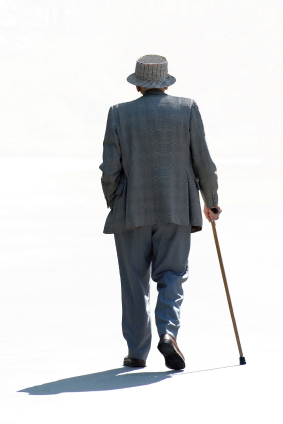
Posted by Dr. El - August 4, 2010 - End of life, Inspiration, Something Good About Nursing Homes

William Losefsky, Director of Safety, Security & Emergency Management for the New Hampshire State Veterans Home contributed today’s post. I found it very touching, and I’d like to hear more ways in which nursing homes acknowledge the loss of their residents. If you have a ceremony you’d like to share with MBNH readers, please email it to me via the Contact Me button, or add it to the Comments section at the bottom of this post.
The Final Salute: One long-term care facility’s strategy to say farewell with dignity and respect
Imagine sitting down to breakfast and then noticing that one of your fellow residents is not sitting in his customary spot at the breakfast table. That is when fellow residents would first find out that one of their comrades had passed away. Earlier in the evening the resident had expired and was shuttled out the freight loading dock into a waiting hearse. This was how the death process was dealt with before we instituted the “Final Salute” protocol.
The New Hampshire Veterans Home felt that the resident was welcomed through the front door as a new admission and he should go out that same front door on his final departure. We then worked on coming up with a process that is now known as the “Final Salute.”
We put together a process in which we place an American flag over the gurney of a deceased resident. We then escort the body and lead the deceased resident to our common area by the dining room. The residents are called to attention by the resident council president. We created a short final prayer that is read:
(Resident’s Name) is now leaving the veterans home on his/her heavenly departure. May (Resident’s Name) now rest in peace. We thank you for your honorable service to your country in it’s time of need.
We then salute the deceased resident and the resident counsel president chants “two” and a uniformed security officer escorts the body down the elevator to the main entrance of the facility. The American flag is then removed from the deceased resident prior to being loaded into the funeral director’s vehicle and the flag is then ceremoniously folded and prepared for further service. We announce over the public address system that the resident has passed and we ask for a moment of silence as we ring a brass bell 3 times in somber remembrance of the resident.
Many of our residents pass away at a hospital. We designed a plan for that as well. If the resident passes away from the facility we continue to have the procession walk. Instead of escorting the deceased resident’s gurney, the security officer carries a crisp folded American flag. The security officer walks the length of the hall and stops at the exact location as if the body was at rest. The same exact ceremony is conducted with the security officer holding the flag in symbolic remembrance of the resident.
We slowly integrated having the escorting security officer wear white gloves. Many of our officers keep their shoes and boots at a high level of readiness as General George S Patton was well known for saying “You are always on parade.”
This “Final Salute” protocol has been extremely well received by the residents as they now have proper closure in saying good bye to their comrade in arms. The final salute was recognized in the Quality of Life Award in New Hampshire and was given a standing ovation.
The first time we did this, we were amazed at the military bearing that a 90-year old wheelchair-bound war veteran was able to muster. Many stood up from their wheel chairs and others had to use two hands to snap a salute due to a stroke. It greatly moved the staff as well as the residents and visitors. All we could think of is that we should have been doing this sooner.
A long-term care facility is the last home a person will have and their passing should be something more than a ride through a loading dock. My intent is for others involved in long-term care to read this article about the Final Salute in the hopes that other facilities might take up the practice in honoring their residents who pass. The process does not have to be as elaborate as ours and can build over time. I would suggest involving the residents and the resident council as much as possible.
William R Losefsky CHPA, CMI, CPM, CIRM
Director of Safety, Security & Emergency Management
New Hampshire State Veterans Home
139 Winter Street
Tilton, NH 03276-0229
603-527-4803
http://www.nh.gov/veterans











 Beloved residents decline and then die, their families stop visiting the nursing home — coming to terms with these losses is an unacknowledged challenge of our work. Especially helpful for training directors, new employees, or those struggling with a current loss either on or off the job, this 20-minute audio will help staff members:
Beloved residents decline and then die, their families stop visiting the nursing home — coming to terms with these losses is an unacknowledged challenge of our work. Especially helpful for training directors, new employees, or those struggling with a current loss either on or off the job, this 20-minute audio will help staff members:




